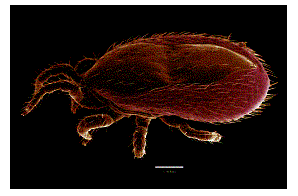Rob Cruickshank
Contact:
Ecology and Entomology Group,
Soil, Plant and Ecological Sciences Division,
Lincoln University
Webpage: http://taxonomy.zoology.gla.ac.uk/~rcruicks/rcruickshank.html
Principal Investigator:
Dr. Adrian Paterson, Lincoln University
I am a postdoctoral research fellow working on a RSNZ Marsden funded project using molecular phylogenetics to investigate the evolution of parasitism in a group of mites.

Molecular methods are particularly suitable for reconstructing the phylogenies of parasites since morphological data often contain a great deal of homoplasy due to convergence of adaptations for parasitism. Morphological characters may be plastic and determined by the host, leading to morphological variants being misinterpreted as different species, and overestimation of the degree of host-specificity. Parasitism often results in loss of morphological characters that are then unavailable for phylogenetic analysis and may be difficult to homologise with their free-living relatives. Robust molecular phylogenies can be used to independently test hypotheses concerning the evolution of morphological and life history adaptations to parasitism. Sequencing homologous genes for related clades of free-living and parasitic organisms allows a comparison of their rates of molecular evolution.
I'm exploring some of these issues in a group of mites called the Dermanyssoidea. This group contains free-living predators as well as an astonishing variety of associations with other animals. These associations include nidicoly (living in the nest of a host but feeding on other organisms found there rather than on the host itself), phoresy (the use of a host for transport between habitat patches solely as a means of dispersal rather than a source of food), paraphagy (feeding on host secretions rather than directly on the host itself), as well as both ectoparasitism and endoparasitism. The range of hosts is equally diverse and includes both vertebrates and invertebrates. Despite the ubiquity of parasitism in nature surprisingly few studies have looked at the origins of parasitism or attempted to deduce the evolutionary routes that lead some animals to become parasites and others to become hosts. I will be constructing a molecular phylogeny for the Dermanyssoidea and using it to attempt
to answer some of these questions.
|